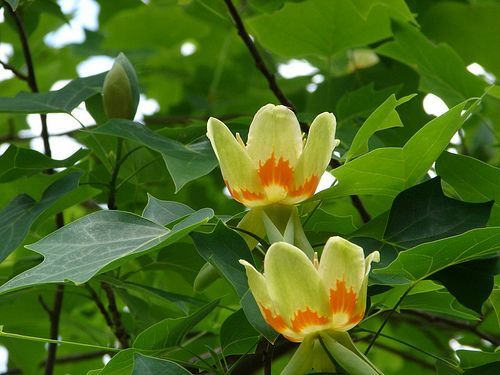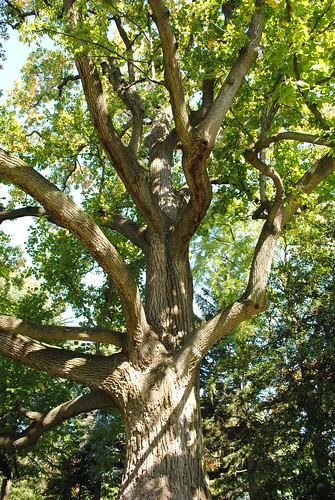
Tulip Tree – Root and Branch Review
Liriodendron tulipifera or Tulip tree is a tall striking tree related to the magnolia with similar Tulip shaped flowers. It has been planted in Britain since 1688 as an ornamental parks and gardens tree.
Key Features of the Tulip Tree
- Latin name – Liriodendron tulipifera – other common names Tulip poplar or yellow poplar
- Height – 90-100 feet
- Type of tree – decidious
- Leaves – Deeply lobed green turning yellow-gold in autumn
- Flowers – Six petals pale green at the edges and orance corollas at the centre
- Fruit – Cone like woody unseeded fruit with one wing.
- Bark – Pale grey-green with white furrows
- Family – Magnoliacaea
Origins and Distribution of the Tulip Tree
- Eastern seaboard of North America.
- Now more widely spread as a specimen tree in UK and elsewhere.
Uses and Attributes of the Tulip Tree
- The fine grained soft wood is used for plywood and pulp.
- Ornamental due to the flowers and leaf colouring.
Gardeners Tips for the Tulip Tree
- Flowers are not produced on young trees. Flowering can take over 8 years from seed sowing.
- Fastigiatum is a slender columnar tree suitable for more constrained spaces.
- Flowers are generally high up in the tree and thus less visible.
Other types of Tulip Tree
- Until the 20 century it was thought tulipifera was monotypic. Then a plant was discovered in China with leaves more glaucus and smaller in flower and stature Liriodendron chinense.
- Liriodendron tulipifera Aureomarginatum have edged leaves and Liriodendron tulipifera Integrifolium has leaves without lobes.
Credits
On my Tulip Tree_4-30-08 by jimbrickett CC BY ND 2.0 ‘These are the blooms on my Tulip Tree in my yard today (there are a hundred of them). Most too high to see well.’
Interior of Sprawling Tulip Tree, Tudor Place by ok-oyot CC BY-NC-ND 2.0
Tulip tree, Liriodendron tulipifera, Flower by nipplerings72 CC BY-NC-ND 2.0
“Tulip Tree Flower 7236 by pjriccio2006 CC BY-NC-SA 2.0 ‘The Tulip tree is a large, deciduous tree, which easily reaches 70′ to 90′ tall, and large trees to 150′ or more are common. The flowers are 2″ to 3” long, tulip-shaped, upright blossoms, borne singly at branch ends, and blooms late may through mid-June. The petals are yellow-green, and the inside of the corolla base is orange. Unfortunately, most flowers are borne in the higher reaches of the plant and are not easily observed. These flowers were collected on a series of cool windy days.’




